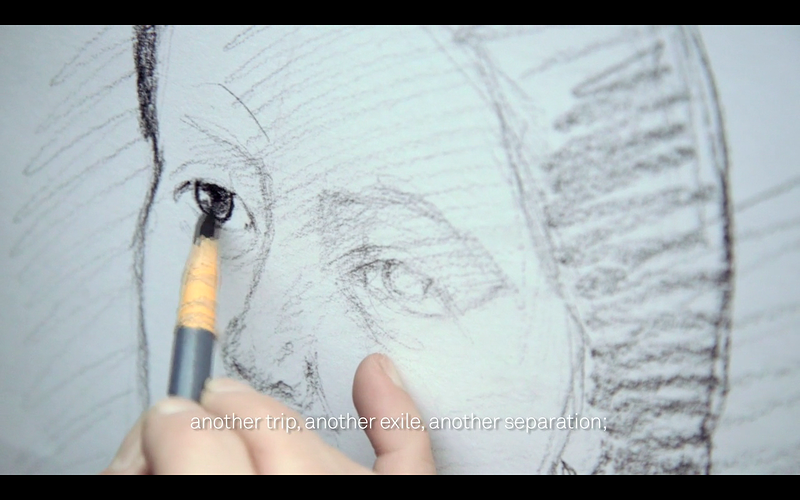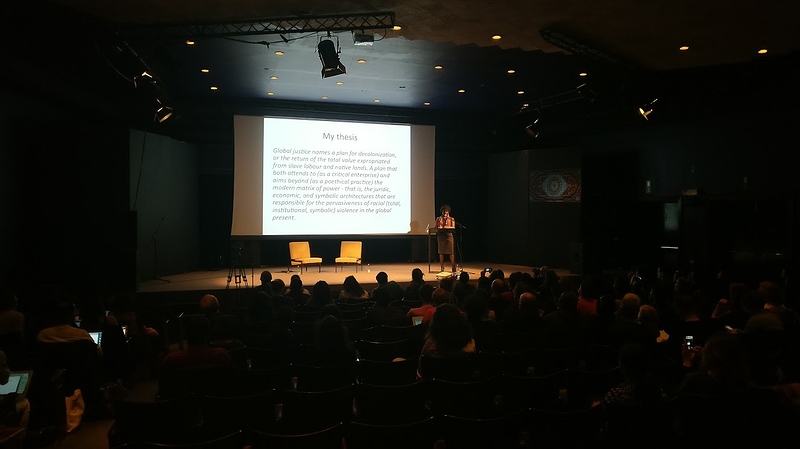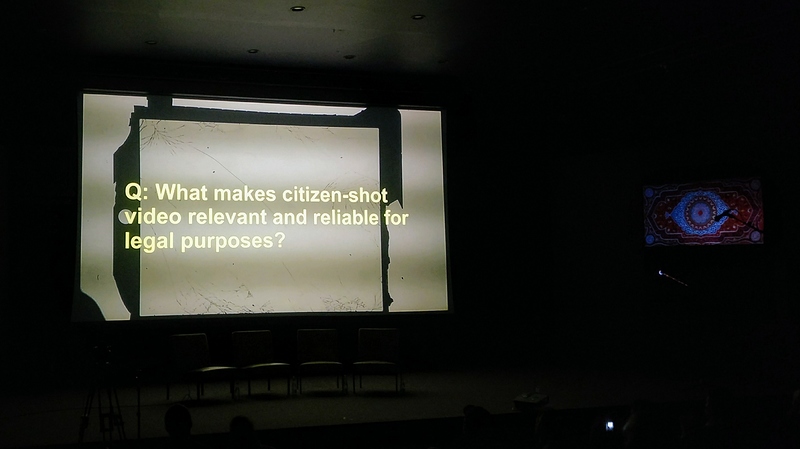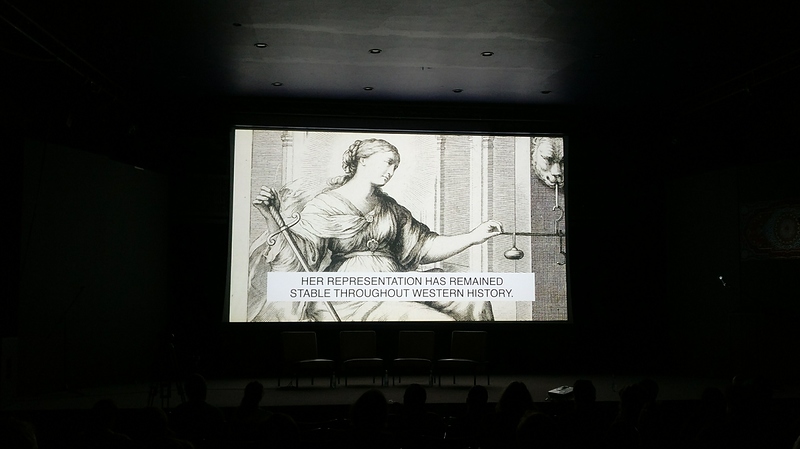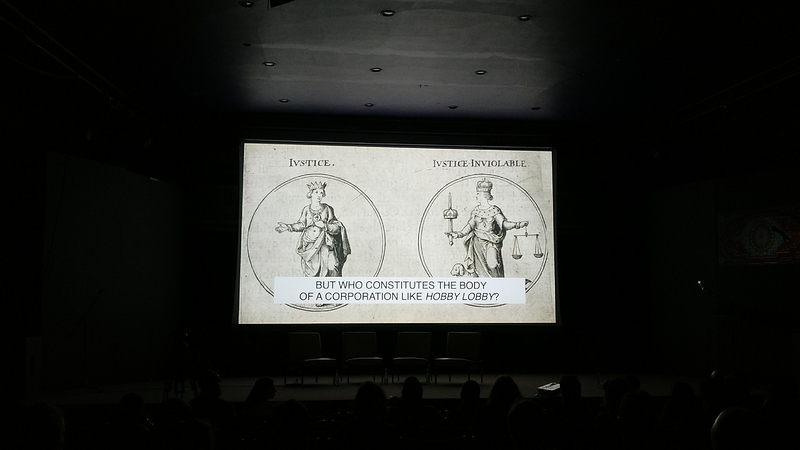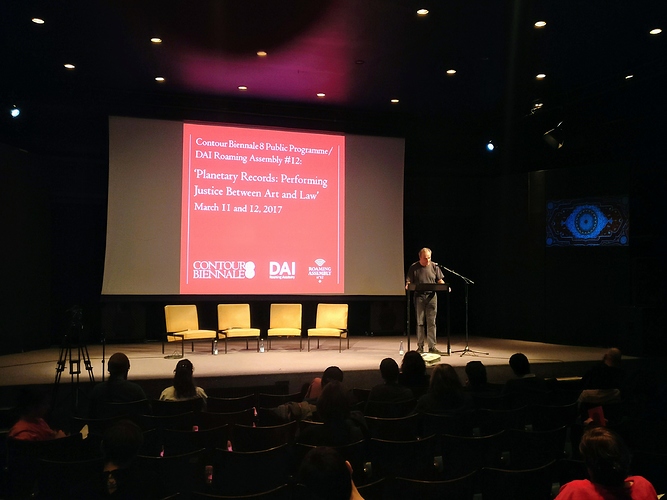Council is presenting the project The Against Nature Journal, with a series of contributions from Aimar Arriola, Grégory Castéra, Carlos Motta, Buenos Tiempos, Int. (Alberto García del Castillo and Marnie Slater), and students from the Dutch Art Institute (DAI). _Council_was founded in 2013 by Grégory Castéra and Sandra Terdjman. Here’s a link to their website:http://www.formsofcouncil.org/en/.
The different presentations spoke to gender identity and embodiments of queerness. They took different forms - we were particularly taken by Carlos Motta’s video, Deseos (2015). The video is a letter exchange between two women, Martina and Noor, who are living in Santa Fe and Beirut in 1804.
Carlos Motta, Deseos, video still, 2015
Carlos Motta, Deseos, Screening at Contour Biennale, Mechelen, 2017
Here’s a link to Motta’s video: https://vimeo.com/127254583
An immediate thought about the visuals: there is a beautiful moment that shows a pearl in the long black hair of Aisha (who we presume to be Noor’s lover). It reminds us of the scene in the novel The Fingersmith by Sarah Waters. Book spoiler alert: the point when the two women finally sleep together is a highly charged sexual moment, and barely described. When one of the women comes, she cries out ‘You pearl’. It’s so sexual and yet the author describes nothing. Same as this film. A slow-moving camera pans across contemporary landscapes (or rather, landscapes that are signposted as shot in the present day): graffitied walls, a road sign along a highway, an abandoned house, a mountain scene, a little bird in an orange cage etc.
Something else that stood out was the performance called Strictly Ballroom by Buenos Tiempos, Int. 
But first a disclaimer: today’s symposium is taking place in a converted church. The venue is called the Holy Ghost.
The performers utter and repeat Hey you, what you gonna do when God dies? And when they do, the overhead lights in the venue, which is really and truly a church, come on. The lights flicker and then turn off again. Is God trying to tell us something? Is art a big sham? Is the Lord Almighty pissed off at us? The biennial opening took place in this very location last night. Everyone drank free beer. Here in the place of the Lord. Lord have mercy on us and our hangovers.
Live performance Strictly Ballroom by Buenos Tiempos, Int. at Contour Biennale 8, Mechelen 2017
Before our next drink, we move on to the last presentation of the day, a lecture performance by artists Filipa César and Louis Henderson.
 Yippee!
Yippee! 
And, now…Filipa César & Louis Henderson’s lecture performance Refracted Spaces: An Archeology of Optics which expands on their research project on the study of historical methods of optical navigation and new algorithm of locating. The artists imagine the lighthouse lens as a departing point to develop a critique of Western epistemology, or what, in conversation with co-curator of the public programme Rachel O’Reilly, the artist Filipa César describes as the act of ‘decolonizing the lighthouse.’ Against the Enlightened ideals of clarity and transparency, the artists call for a politics of opacity.
Here’s a link to Louis Henderson’s contribution to the Contour Biennale 8 journal, Hearings: http://hearings.contour8.be/2016/08/05/america-de-bry-1590-1634/
Filipa César & Louis Henderson, Sunstone, production still, 2017.
Research image for a ciné-conversation between Filipa César and Louis Henderson, 2016.
It’s all for today. It has been a long and inspiring day of presentations.
See you tomorrow for the second part of the symposium!
